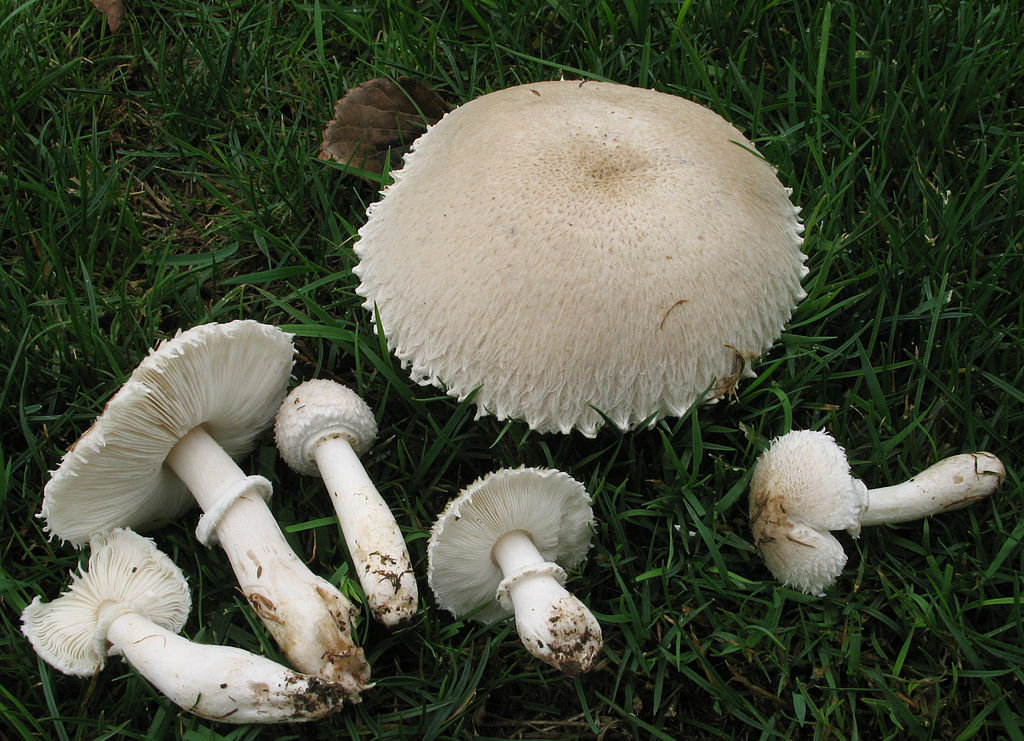Leucoagaricus barssii: Red Data Book of Armenia

Category. CR – Critically Endangered.
Brief description. Cap is 15–25 cm across, white, grey or greyish– brown in the centre, with whitish margins, velvety, filamentous, covered with scales. Flesh is white and fleshy. When mature it gets light brown colouring. It has pleasant taste and smell. Gills are white when fresh, the dry ones are light brown, free, crowded, with straight margins. Stipe is 5–8 x 1–2 cm long, central, cylindrical with longish root, slightly narrow in the lower part, white in the upper part of the ring. The lower part has the colour of the cap whitish with simple ring. Spore print is whitish. Spores are 7–8 x 4,5–5,5 µm, colourless, wide ellipsoid, smooth.
Distribution. Generally in Europe, Asia, Africa, Southern Caucasus (Armenia). In Armenia it is discovered in Yerevan floristic region – in Zeva, in the surroundings of Lake Aiger (Aiger lich); in Aparan floristic region – in the riverside of the river Marmarik, in the mixed forest border.
Ecological, biological and phytocenological peculiarities. It is rarely met, mainly in unique individuals, on the soil, in the gardens, in the fields, in wood glades, on the altitude of 860–1500 m above sea level, in the months of July, October and November. Saprotrophic fungi on the humus.
Main factors of endangering. Not examined.
Nature conservation measures. It is necessary to collect mycelial cultures for the conservation of natural populations, as well as monitoring of habitats.
Suggestions
 The Ministry of Environment sent a letter international partners to draw their attention to the real danger of environmental disasters as a result of Azerbaijan's large-scale aggression towards the territory of Armenia
The Ministry of Environment sent a letter international partners to draw their attention to the real danger of environmental disasters as a result of Azerbaijan's large-scale aggression towards the territory of Armenia
 Vicia pisiformis: Red Data Book of Armenia
Vicia pisiformis: Red Data Book of Armenia
 Vavilovia formosa: Red Data Book of Armenia
Vavilovia formosa: Red Data Book of Armenia
 Trigonella capitata: Red Data Book of Armenia
Trigonella capitata: Red Data Book of Armenia
 Trigonella astroides: Red Data Book of Armenia
Trigonella astroides: Red Data Book of Armenia












